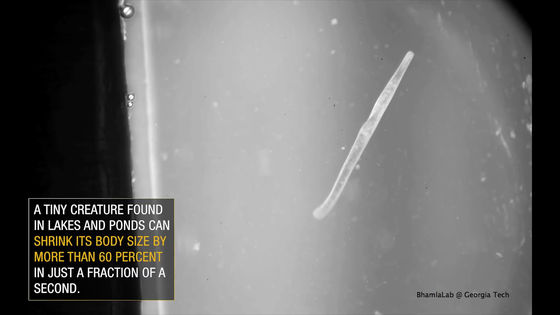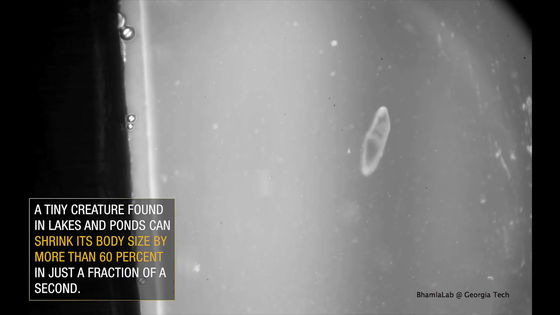'Spirostomum ambiguum' which is the fastest creature in the world even though it is only a few millimeters in size

There are many fast-moving organisms, but the fastest is a unicellular organism called
World's Fastest Creature May Also be One of the Smallest | Research Horizons | Georgia Tech's Research News
https://rh.gatech.edu/news/609421/worlds-fastest-creature-may-also-be-one-smallest
These Are the Fastest Creatures on Earth But You'll Never Spot Them
https://www.livescience.com/63303-fastest-creature-single-cell-nanobot.html
The cheetah can run at speeds of 100 km / h or more, and it is a natural program that the flight speed of the falcon reaches 390 km / h at the time of a dive.
You can see how the rod-shaped Spirostomum ambiguum literally transforms into a rugby ball shape 'in an instant' in the following movie. You may be wondering, 'Do you compare it to the cheetah's running speed or the falcon's flying speed?'
World's Fastest Creature may also be One of the Smallest --YouTube
The world's fastest creature, Spirostomum ambiguum, lurks in the water inside the beaker.

This is Spirostomum ambiguum. When it looks like a rod, it is about 4 mm long.

From here, it is possible to change to the following elliptical shape at a speed that the human eye can not follow the change in just a few milliseconds.

Spirostomum ambiguum is a weak unicellular organism that can move faster than cheetahs and hawks. By clarifying how this mechanism works, it may be possible to develop a small robot that can move quickly with almost no energy, is the research team of Associate Professor Bhamla and others. is.
Human muscle relies on the activity of actin and myosin , but small organisms such as Spirostomum ambiguum appear to have different mechanisms. 'If Spirostomum ambiguum had only the actin and myosin that make up the muscle, it wouldn't have been possible to achieve this movement,' said Bhamla. According to Associate Professor Bhamla, the acceleration of Spirostomum ambiguum can reach up to 200 meters per second squared, which is 'a truly extraordinary value.'
Associate Professor Bhamla said, 'We want to record everything this creature is doing and computer-model it to take an engineering approach. We also see unicellular organisms like Spirostomum ambiguum prominent. I would like to learn how to enable acceleration and how to amplify the power output using molecular springs. '
In addition, it should be noted that the internal pressure must rise sharply in order for Spirostomum ambiguum to produce overwhelming acceleration. '. Understanding how this works may enable us to create robust biomaterials that can withstand extreme stress and pressure, says Bhamla.
Related Posts:







